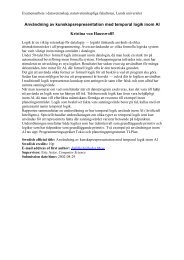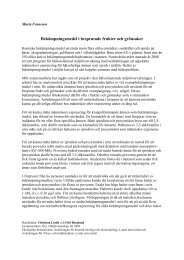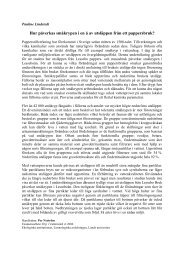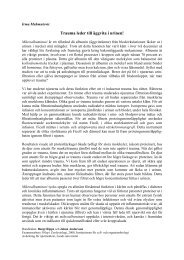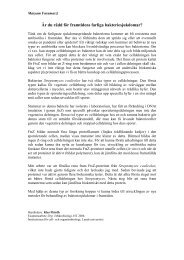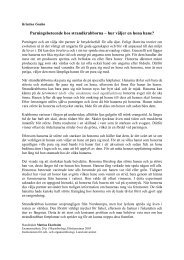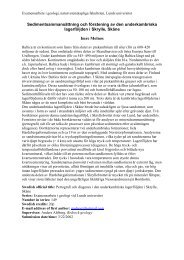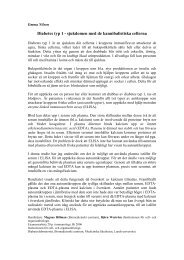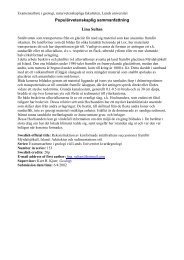Torktåligt vildris i Afrika - IT - Lunds universitet
Torktåligt vildris i Afrika - IT - Lunds universitet
Torktåligt vildris i Afrika - IT - Lunds universitet
You also want an ePaper? Increase the reach of your titles
YUMPU automatically turns print PDFs into web optimized ePapers that Google loves.
Responses to seasonal drought in an African wild-rice species,Oryza longistaminata A. Chev et. Roehr.Andreas PressAdvisor: Tina D’HertefeldtDegree project 30 credits in Plant ecology and Systematics 2009Department of Ecology, Plant Ecology and Systematics, Lund UniversityAbstractClonal plants show varying degrees of integration. During times of stress,interconnected ramets can promote genet survival by integration and sharing ofresources. Most studies on clonal plants have been undertaken in temperate and arcticclimates, where stress is often due to short growing seasons and nutrient deficiency. Inthe tropics, however, few studies have been undertaken on clonal plants – here theplants encounter other types of stress than those growing in temperate and arcticclimates. During the dry season, terrestrial plants have to endure long periods ofdrought. A clonal wild rice species, Oryza longistaminata, was studied during the dryseason in Kenya's coast region.Clone size and structure are important factors when clonal plants are being studied,regarding this, 10 entire clones of O. longistaminata were excavated and measured interms of total rhizome length, ramet height and area covered by the clone. To see ifplants from a seasonally dry site survived drought better than plants from a pondwhere water availability is higher – a bench garden pot experiment was performed,where plants from both sites was subjected to drought. Rhizome growth depth andwater content was measured by taking 20 core samples were all rhizomes werecollected and weighted before and after drying. A pot experiment, where 4 sizecategoriesof rhizome fragments were planted in well watered pots, was performed tosee if there was any relation between rhizome size and ability to produce shoots.The excavated clones showed impressive sizes. Actual genet size could be evenbigger than seen here since some rhizome ends seemed to be cut off. No difference indrought tolerance could be seen between plants from the dry and wet site. Mostrhizomes grew at a depth between 5 and 15 cm, however, some rhizomes grew deeper(20-30 cm) and these had higher water content than the shallower rhizomes. Thiscould be a way of storing water for the dry season. All size-categories of rhizomeswere able to produce shoots, even after repeated cutting. No relationship between totalrhizome fragment size and ability to produce shoots could be seen – instead arelationship was found between size of the individual internode and shoot growth.



